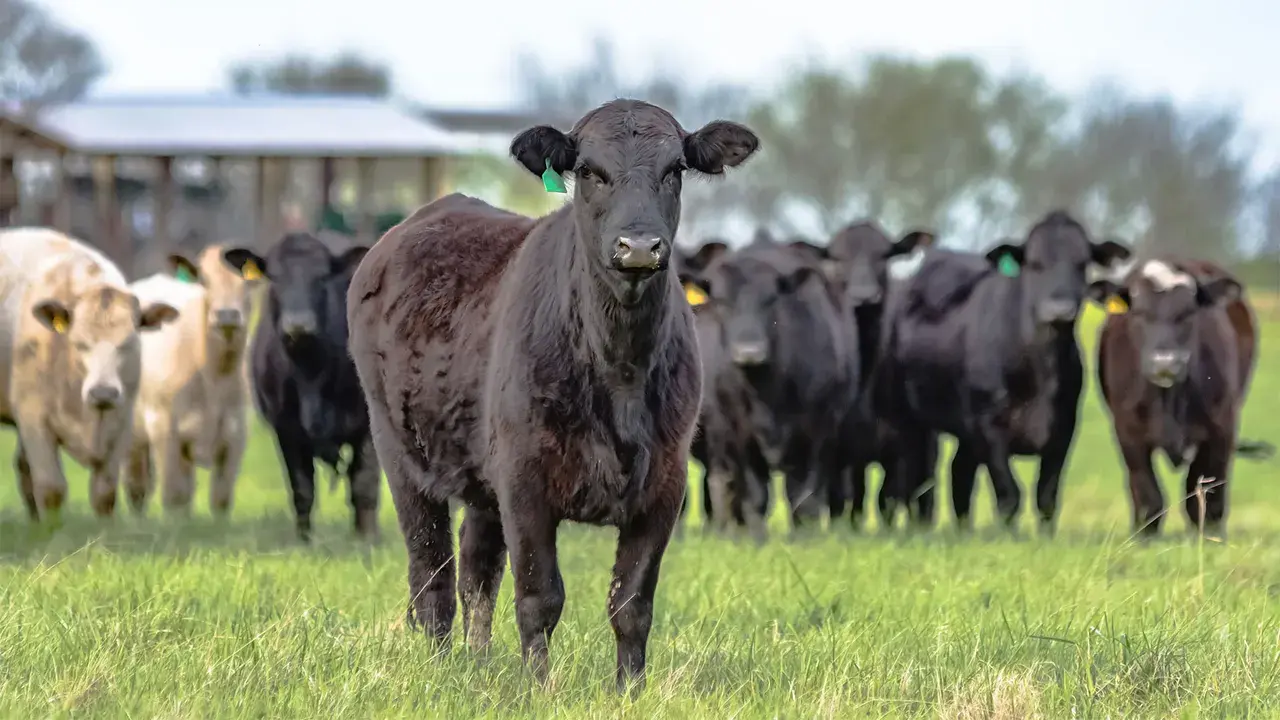In 1910, a failed House Bill sought to increase the availability of low-cost meat by importing...
Has U.S. Cow Herd Rebuilding Finally Begun?

Rain that produced grass is allowing beef producers to keep more females on the farm. It could be a signal that cattle herd rebuilding is underway in the U.S.
Cattle markets reached record levels through the first half of 2025, but the final push to even higher prices should come several months after heifer retention begins in earnest.
Anecdotal indications from producers and lenders, along with improved forage conditions in some regions, support the idea that heifer retention is underway.
Although available data remains limited, April's figures revealed that heifers in feedlots experienced their largest percentage decrease relative to total feedlot inventories in the past five years. USDA reports in late July will provide more data on heifers in feedlots and midyear cattle inventories.
Feedlot placements in the six months through May were down 4.4% year over year, in part due to decreased heifer feeding, suggesting that feedlot production and cattle slaughter will continue to decrease in the second half of 2025.
If heifer retention occurs faster than it has in the past 18 months, cattle supplies will become noticeably tighter for the remainder of the year and into 2026.
Impact on cattle prices
In Oklahoma auctions, prices for 500-pound steer calves and 800-pound yearling steers increased about 18% in the first half of the year. Fed cattle prices increased 20% from the beginning of the year before peaking, at least briefly, in mid-June.
Still, cattle markets are slowing a bit for the summer.
At the end of June, both feeder and fed cattle markets appeared to pause in the rarified air of record price levels. Feeder and fed cattle markets retreated slightly in late June after live and feeder futures markets pulled back from early June highs due to rising global geopolitical tensions.
Cattle markets may move more sideways through the heat of the summer, but declining beef production and continued strong consumer beef demand suggests cattle markets have not fundamentally weakened.
The bulk of the cattle price increases for the year may have been in place by midyear, but feeder and fed cattle prices are expected to be steady to slightly higher for the remainder of the year, barring some major shock in global and U.S. economies.
It also depends on whether cow-calf producers are moving more aggressively toward heifer retention and herd rebuilding, which will provide additional support for cattle prices going forward.

Declining beef production
After surprisingly stable beef production in 2024 and into the first quarter of this year, beef production started to fall on declining fed slaughter in the second quarter of this year.
Total beef production was down just 0.2% year over year in the first quarter of 2025. However, through the first 10 weeks of the second quarter, beef production was down 4.3% year over year compared to last year.
Fed beef production was down 3.6%, the result of fed steer and heifer slaughter decreasing 5.8% year over year in the second quarter. This combined with continued decreases in non-fed beef production (down 8.9% for the year to date) pushed wholesale beef and trimmings prices sharply higher through June, providing support for cattle prices.
Choice boxed beef cutout values, likewise, increased over 25% from the early March low through the end of June (see chart).
EDITOR’S TAKE:
Because many Americans like their steak or burger, we like to keep you informed about what is happening with the beef markets. It appears that production continues to lag far behind demand. That portends higher prices for both consumers and cattle producers. Is there hope for more production on the horizon? According to this article, there is a faint glimmer of heifer retention that could boost supply down the road.
In the meantime, cattle producers are making money faster than they can spend it. They should be at the absolute top of your ag customer prospect list. Call them, text them, but find some way to let them know you are a CAD dealer and explain what that means to them. Inform them that you support agriculture and your employees have been specially trained to meet their needs, whether it is sales, parts or service.








